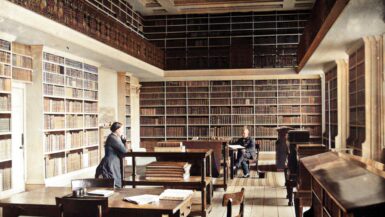Irish census records provide an invaluable resource for genealogists and family historians. These records can reveal fascinating insights into your ancestors’ lives, including their occupations, religious affiliations, and family relationships. This comprehensive guide aims to provide you with all the information you need to navigate the world of Irish census records effectively. We will explore the different types of census records available, where to find them, and how to use them to uncover your family’s unique story.
The History of Irish Census Records
The history of Irish census records dates back to the early 19th century. However, many of the earliest records have been lost or destroyed due to a combination of government policy, accidental damage, and the tragic fire at the Public Record Office in 1922. As a result, the availability of Irish census records is limited compared to other countries.
Despite these challenges, there is still a wealth of information to be found in the surviving records. The most complete and accessible Irish census records are from 1901 and 1911, while fragments of earlier censuses and a variety of census substitutes can provide additional insights into your ancestors’ lives.
Types of Census Records
Complete Censuses
Complete censuses are those that have been fully preserved and are available for public access. In the case of Irish census records, the 1901 and 1911 censuses are the most comprehensive and accessible sources. These records provide a snapshot of Irish society in the early 20th century, with detailed information on individuals, families, and households.
Census Substitutes
Census substitutes are records that, while not official censuses, can provide valuable information about your ancestors in the absence of complete census data. Examples of census substitutes include land valuations, tax records, and church records. While these sources may not be as detailed as a full census, they can still offer crucial information for genealogical research.
The 1901 and 1911 Censuses: A Detailed Look
What’s Included in These Censuses
The 1901 and 1911 censuses are the most complete and accessible Irish census records available. These censuses recorded a wealth of information about individuals and families, including:
- Name
- Age
- Gender
- Occupation
- Relationship to head of household
- Marital status
- Religion
- Birthplace
- Language spoken
- Literacy level
- Disabilities
- Number of children born and still living (1911 census only)
In addition to individual and family information, the censuses also recorded details about each household, such as:
- House number and address
- Type of dwelling (e.g., house, apartment, cottage)
- Number of rooms
- Land ownership and size
- Livestock owned
- Outbuildings
How to Access the 1901 and 1911 Censuses
The 1901 and 1911 censuses can be accessed for free online through the National Archives of Ireland’s website. This user-friendly database allows you to search by name, location, and other criteria to find your ancestors in the census records. High-quality digital images of the original census forms are also available for viewing and downloading.
Census Fragments: Discovering Earlier Census Records
The 1821-1851 Censuses
While the majority of Irish census records from 1821 to 1851 were destroyed in the 1922 fire, some fragments have survived. These surviving fragments can provide valuable insights into your ancestors’ lives in the early to mid-19th century. However, due to the incomplete nature of these records, they may not be as detailed or comprehensive as the 1901 and 1911 censuses.
Where to Find Census Fragments
Census fragments can be found in various repositories, including the National Archives of Ireland, the Public Record Office of Northern Ireland (PRONI), and local archives and libraries. Some fragments have also been digitized and made available online through websites like the National Archives of Ireland, IrishGenealogy.ie, and subscription-based services like Ancestry.com and Findmypast.
Census Substitutes: Other Sources for Irish Genealogy
A. Griffith’s Valuation
Griffith’s Valuation is a detailed property valuation survey conducted between 1847 and 1864. It is considered one of the most important census substitutes for Irish genealogy, as it provides information on landowners and tenants across the country. Griffith’s Valuation can be accessed for free online through websites like AskAboutIreland.ie and the National Library of Ireland’s Genealogy Advisory Service.
B. Tithe Applotment Books
Tithe Applotment Books, compiled between 1823 and 1837, recorded the payment of tithes by landowners and tenants to the Church of Ireland. While not as detailed as a full census, these records can help you trace your ancestors’ land ownership and occupation during this period. Tithe Applotment Books can be accessed online through the National Archives of Ireland’s website and the Public Record Office of Northern Ireland (PRONI).
C. Other Census Substitutes
There are numerous other census substitutes available for Irish genealogy, including:
- Church records (baptisms, marriages, and burials)
- Civil registration records (births, marriages, and deaths)
- Land records (Registry of Deeds, Landed Estates Court records)
- Wills and probate records
- Newspapers and directories
Many of these records can be accessed online through the National Archives of Ireland, IrishGenealogy.ie, subscription-based services, and other specialized websites.
Online Resources for Irish Census Records
National Archives of Ireland
The National Archives of Ireland is the primary repository for Irish census records, housing the 1901 and 1911 censuses, census fragments, and many census substitutes. Their website offers free access to these records, as well as numerous other resources for Irish genealogy.
IrishGenealogy.ie
IrishGenealogy.ie is another valuable resource for Irish genealogy, offering free access to a variety of records, including church records, civil registration records, and some census substitutes. Additionally, the site provides helpful research guides and links to other online resources for Irish family history.
Other Online Resources
There are numerous other online resources available to help you in your Irish genealogy research. Some popular options include:
- Ancestry.com: A subscription-based service that offers access to a vast collection of Irish records, including census fragments, Griffith’s Valuation, and Tithe Applotment Books.
- Findmypast: Another subscription-based service, Findmypast has a large collection of Irish records, including exclusive access to some collections not found on other websites.
- RootsIreland.ie: A subscription-based service operated by the Irish Family History Foundation, RootsIreland provides access to a vast collection of Irish records, including church records, civil registration records, and some census substitutes.
Research Tips for Using Irish Census Records
Understand the Limitations
It is essential to be aware of the limitations of Irish census records, particularly the lack of complete records prior to 1901. Be prepared to rely on census substitutes and other records to build your family tree.
Cross-Reference with Other Sources
When working with Irish census records, it is crucial to cross-reference your findings with other sources, such as church records, civil registration records, and land records. This can help you confirm your ancestors’ identities and uncover additional information about their lives.
Collaborate with Other Researchers
Genealogy research can be challenging, but working with other researchers can help you overcome obstacles and make new discoveries. Connect with other genealogists through online forums, social media groups, and local genealogy societies to share resources, tips, and expertise.
Be Prepared for Name Variations
Irish names can be found in various forms and spellings in census records and other documents. Be prepared to search for alternative spellings and variations of your ancestors’ names. This may involve using wildcard searches and phonetic matching tools in online databases.
In conclusion, while the availability of Irish census records is limited compared to other countries, there is still a wealth of information to be found in the surviving records and census substitutes. By understanding the types of records available, where to find them, and how to use them effectively, you can uncover fascinating insights into your family’s unique story and Irish heritage.





Leave a reply